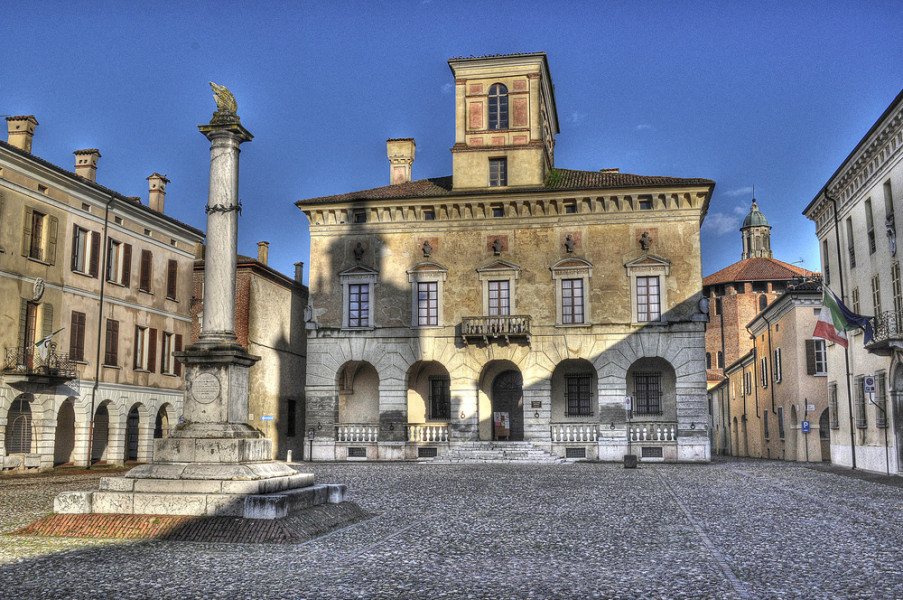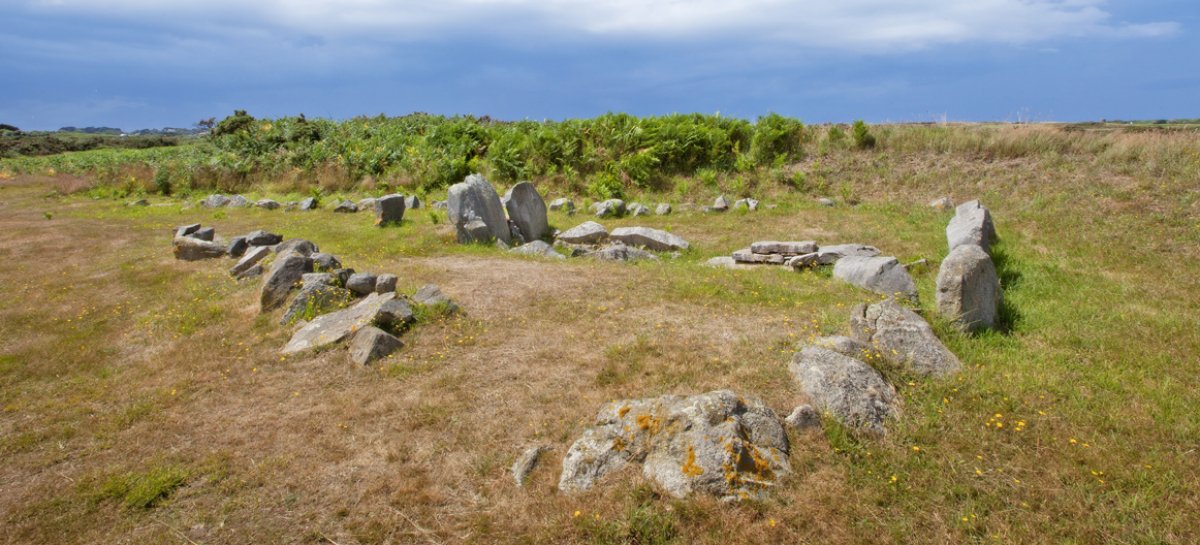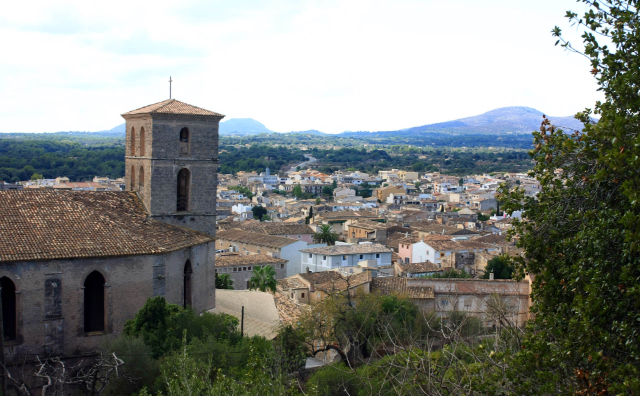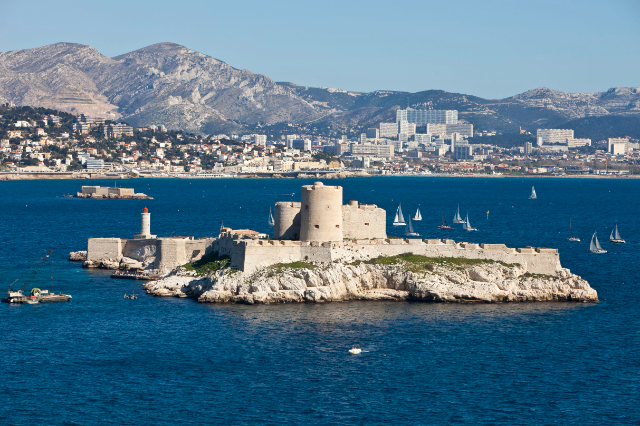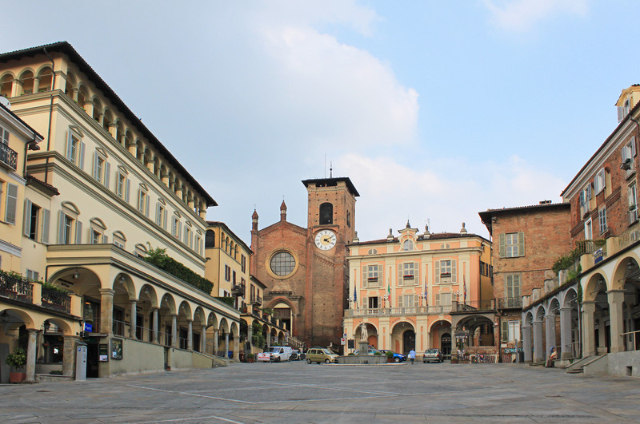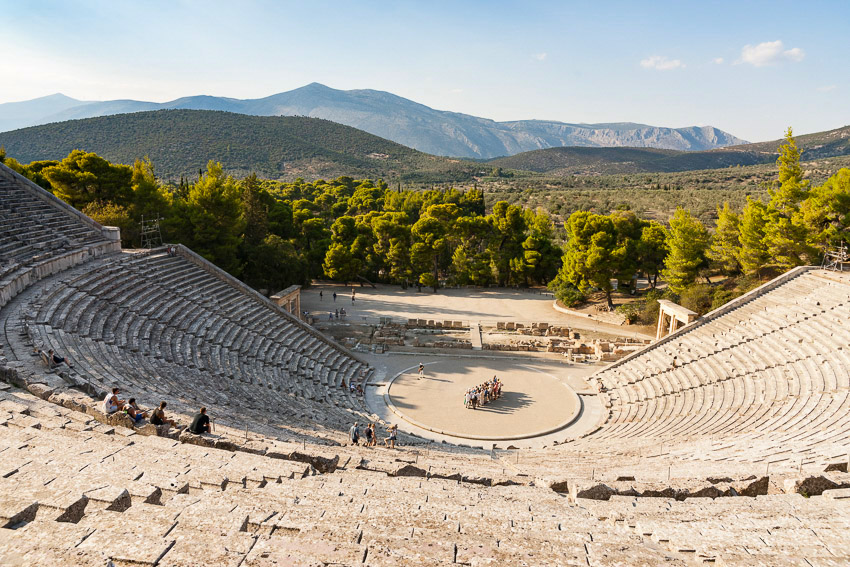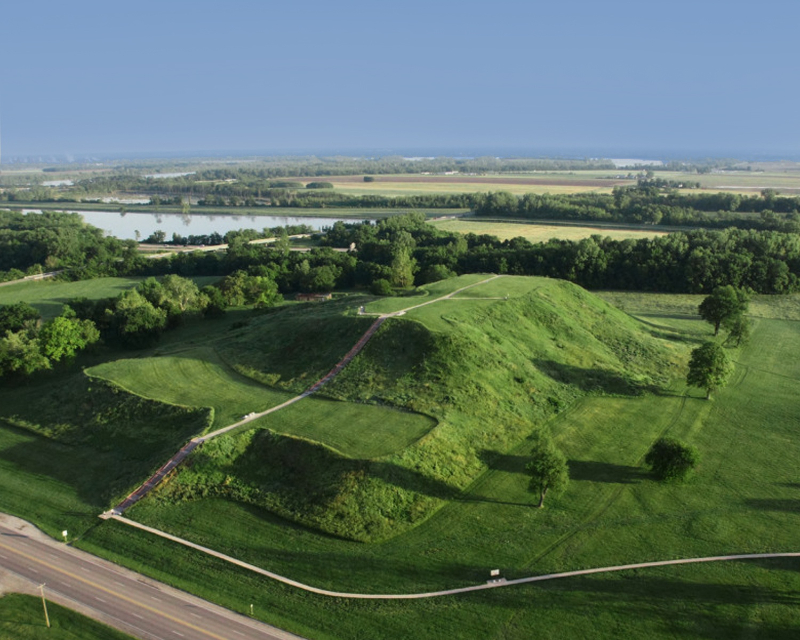Sabbioneta, located 30 kilometers from Mantua, represents the implementation of the urban planning theories of the "ideal city." Sabbioneta was built in the second half of the 16th century under the rule of Vespasiano Gozaga Colonna, and developed according to an orthogonal grid.
A fortress city also called Little Athens, along with Mantua in 2008 it was declared a UNESCO World Heritage Site.
It is included among I borghi più belli d’Italia and was awarded the orange flag by the Italian Touring Club.
Formerly a possession of the Abbey of Leno, in 1444 it passed to the cadet branch of the Gonzaga family of Sabbioneta and Bozzolo. It boasts considerable historical importance for having been founded by Vespasiano Gonzaga Colonna between 1554 and 1591 and was the capital of the Duchy of the same name. Vespasiano knew how to build one of the most beautiful towns of the Italian Renaissance, establishing a civil and military order. He endowed it with an academy, a museum, a library, and a mint. After his death in 1591, a long succession dismembered the duchy, which in 1708 was incorporated into the Duchy of Guastalla. In 1746 Sabbioneta passed to the House of Austria. In 1806 Napoleon reunited Sabbioneta and Guastalla into a single principality.
The Duchy of Sabbioneta was an ancient Italian state of comital origin limited to the present-day municipality of Sabbioneta, which arose by imperial appointment in 1577 and was initially ruled by Vespasiano Gonzaga. It was bordered on the west by the Duchy of Milan, ruled since 1535 by a Spanish governor; on the south, across the Po, by the Duchy of Parma and Piacenza administered by the Farnese; and on the northeast by the Duchy of Mantua dominated by the Gonzaga, but autonomous from them. Vespasian between 1554 and 1556 began the transformation of the ancient village into a military stronghold, fortifying it with walls and taking care of its urban development: he had palaces, churches and other monuments of artistic value erected. The imperial decree granted him the right to mint coinage, and, probably on the premises of the old castle, the duke fixed the seat of the mint, which began operations in 1562. On November 18, 1577, Emperor Rudolph II granted Vespasian the elevation of Sabbioneta to an independent duchy. On February 26, 1591 Vespasian died and Isabella, his only surviving daughter, succeeded him in governing the duchy. The duchess, however, took little care of the fief (she appointed a vicar), having the precious furnishings and objects collected by her father transferred to Milan and Naples, where she usually lived. Between 1630 and 1637 both Isabella and her husband Luigi Carafa della Stadera passed away, leaving the citadel of Sabbioneta (without ducal title) to their granddaughter Anna Carafa della Stadera, who was succeeded in 1644 by heir Nicola María de Guzmán Carafa, the last descendant of Vespasiano Gonzaga, who ruled it until 1689. The Sabbionetano territory passed to the Spanish governorate of Milan, which sold it to the Genoese Francesco Maria Spinola in 1693. Finally, in 1703, Sabbioneta was ceded to the Gonzaga of Guastalla, who incorporated it into their "State" until 1746 with Giuseppe Maria Gonzaga. In 1747 the Duchy of Guastalla was annexed by the Habsburgs of Austria to the Holy Roman Empire.
Jewish Community
July 22, 1436 is the date of birth of the Sabbionetan Jewish community, which reached stages of remarkable development during the five hundred years of its stay in the ducal city, until its members gradually moved to the big cities, particularly Milan. Bonaiuto and Bonaventura da Pisa were the first two Jews authorized, on that distant July 22, to open a loan bank in Sabbioneta, at the behest of Gianfrancesco Gonzaga. Here the members of the community devoted themselves not only to financial activities but also to the printing press, which in 1554 gave birth to the last Italian printing of the Talmud.
Prominent among the Jewish families of Sabbioneta were the Forti and Foà families; to the latter family belonged the recently deceased famous actor Arnoldo Foà, as well as the physician Pio Foà, a forerunner in the fight against tuberculosis and cancer, who was a Senator of the Kingdom of Italy. Sabbionetani Jews never had a ghetto, as Duke Vespasiano Gonzaga imposed on them to live mixed with the Catholic inhabitants.
The community had in succession at least three synagogues; the present one was the last, consecrated in 1824. Falling into neglect in the 20th century, it was restored in the last decades of the same century, and partially refurnished with donations from the Jewish community of Mantua. The Jewish cemetery, located outside the city in Borgofreddo, has 49 tombstones; also fallen into neglect, it was restored and can now be visited upon request to the Pro loco of Sabbioneta, which is in charge of its preservation and maintenance. The last burial bears the date 1937 on the headstone, and concerns a Forti who emigrated to Milan, but who nevertheless wished to return to his homeland when dead. The volume "The Garden of the Jews, Jewish cemeteries in the Mantua area," published in 2008 by the Giunti publishing house in Florence, devotes space to the Sabbionetan cemetery and transcribes all of its grave inscriptions.
The best times to visit it are perhaps at the beginning of October, when the first fogs envelop all the monuments of the "ideal city" and in winter, with few tourists, when it seems to return to the time of Vespasiano Gonzaga.
